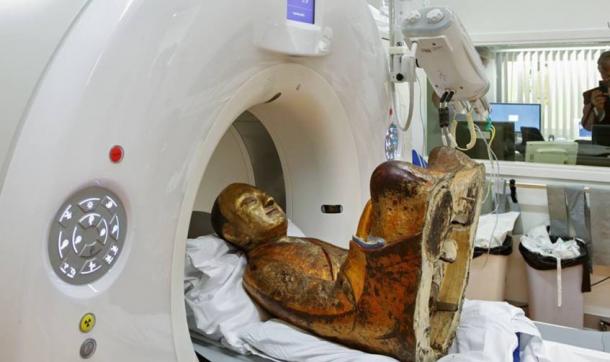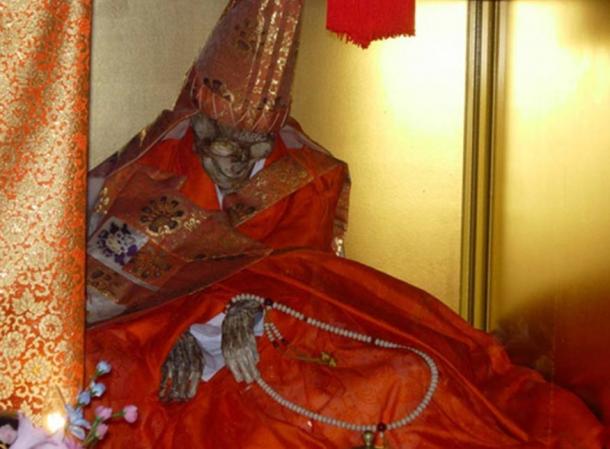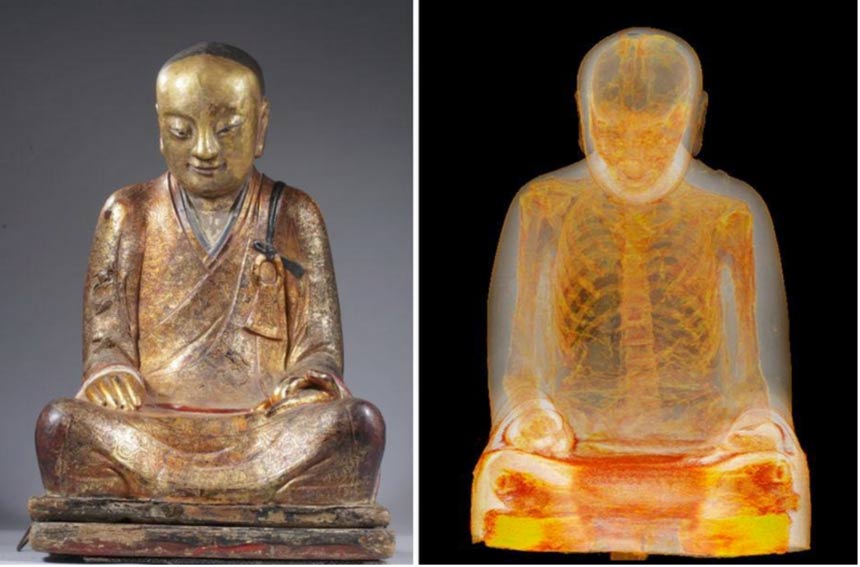The mummified monk inside a Buddha statue
A recent study on a Chinese Buddha statue carried out in the Netherlands revealed a startling discovery - the statue contains the mummified remains of a Buddhist monk.
Irish Archaeology reports that the study was carried out at the Meander Medical Centre under the supervision of Erik Bruijin, an expert in Buddhist art and culture. He was aided by Reinoud Vermeijeden, a gastrointestinal doctor ,and Ben Heggelman, a radiologist, who carried out a CT scan and an endoscopy. The research confirmed that the statue contained the well-preserved remains of a monk who died around 1100 AD.
The monk is believed to be Chinese master, Liuquan of the Chinese Meditation School, though the researchers have not extrapolated what evidence enabled them to identify the individual.

Buddha statue undergoing a CT-Scan. Picture: Jan van Esch / Meander Medisch Centrum
According to NL Times, a specially-made endoscope was used to study the mummy. Vermeijden took samples of an unidentified material and examined the thoracic and abdominal cavities.
“He made a spectacular discovery – among all kinds of rotten material in the space where there had once been organs, he found paper scraps that are printed with ancient Chinese characters,” writes NL Times. “Heggelman took a CT scan that beautifully shows how the mummy looks inside and took samples of bone material for DNA testing.”
Researchers have suggested that the finding may reflect an example of self-mummification where monks undertook years of grueling rituals to mummify themselves to death. The practice was also widespread in Japan, starting over 1,000 years and continuing until it was banned in the 19th century.
For the first 1,000 days, the monks ceased all food except nuts, seeds, fruits and berries and they engaged in extensive physical activity to strip themselves of all body fat. For the next one thousand days, their diet was restricted to just bark and roots. Near the end of this period, they would drink poisonous tea made from the sap of the Urushi tree, which caused vomiting and a rapid loss of body fluids. It also acted as a preservative and killed off maggots and bacteria that would cause the body to decay after death.
In the final stage, after more than six years of torturous preparation, the monk would lock himself in a stone tomb barely larger than his body, where he would go into a state of meditation. He was seated in the lotus position, a position he would not move from until he died. A small air tube provided oxygen to the tomb. Each day, the monk rang a bell to let the outside world know he was still alive. When the bell stopped ringing, the tube was removed and the tomb sealed for the final thousand day period of the ritual.
At the end of this period, the tomb would be opened to see if the monk was successful in mummifying himself. If the body was found in a preserved state, the monk was raised to the status of Buddha, his body was removed from the tomb and he was placed in a temple where he was worshiped and revered. If the body had decomposed, the monk was resealed in his tomb and respected for his endurance, but not worshiped.

The body of Shinnyokai Shonin, found in Oaminaka, Japan. He had practiced self-mummification.

Δεν υπάρχουν σχόλια:
Δημοσίευση σχολίου
NO COMMENTS!